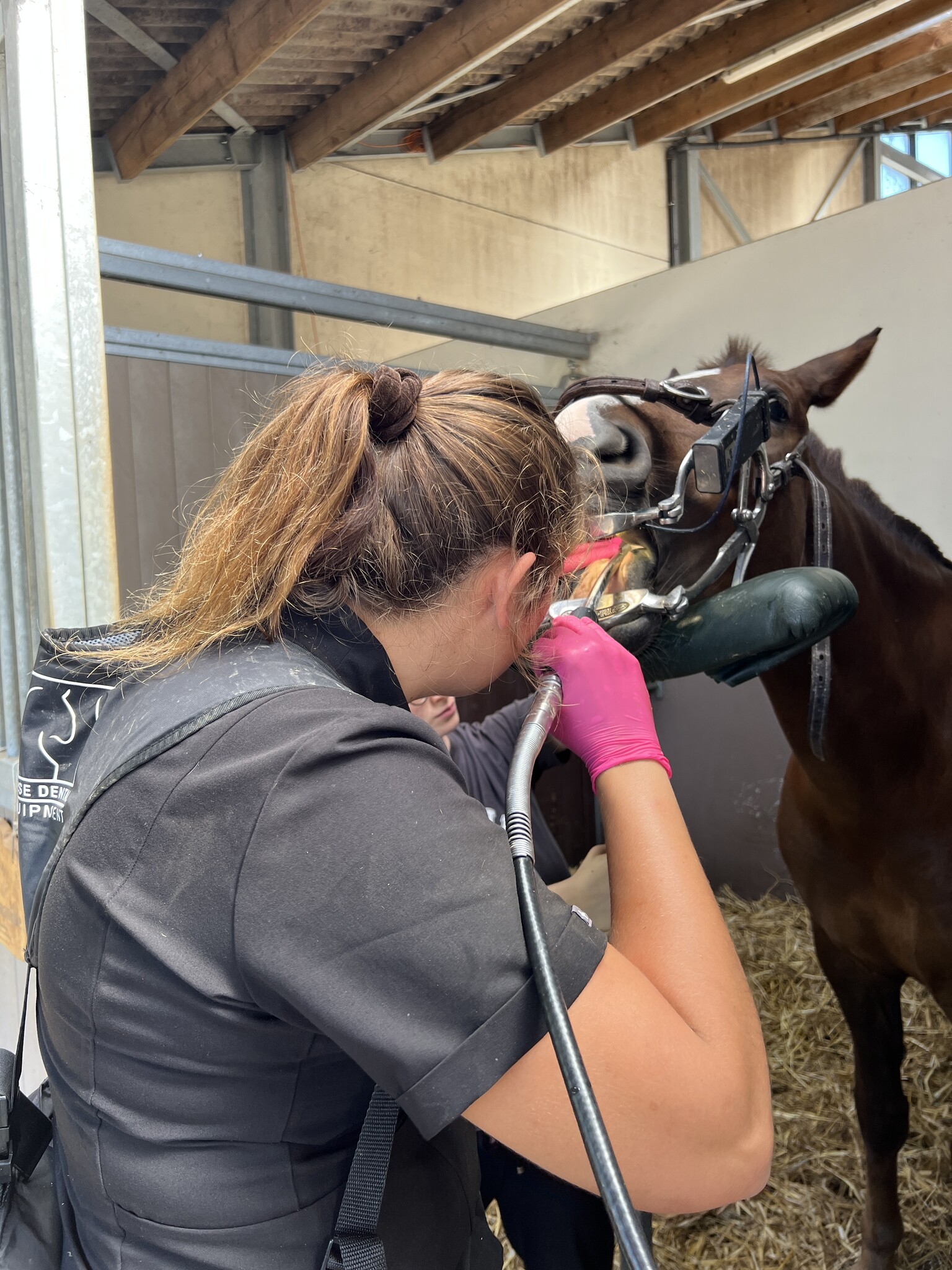The Day of the (Equine) Dentist!
Today, on March 6th, we celebrate Dentist Day. Let's not forget to give a shoutout to our equine dentists! We had a chat with Dorien Huyvaert, a veterinarian specializing in horses and equine dentistry. She answered some frequently asked questions about the dental care of our loyal four-legged friends.
At what age should a horse's teeth be checked?
Young horses are in the process of shedding their milk teeth and getting their permanent teeth. The shedding milk caps (changing milk molars) can cause discomfort during this period. Some horses also develop wolf teeth, which are small rudimentary teeth without function. These wolf teeth sit just in front of the first molars and can cause problems and discomfort when riding with a bit. They are usually located in the upper jaw, sometimes in the lower jaw. Some horses may have "blind" wolf teeth, which remain under the gum. But with a bit, this gum pushes against the tip of the wolf tooth. Therefore, it's important to have your young horse's teeth checked before starting their training, preferably around 2.5-3 years of age. This way, wolf teeth can be diagnosed early, and a painful first experience with the bit can be avoided.



How often should a horse's teeth ideally be checked?
An annual dental check-up is not a luxury. Horses are masters at hiding dental problems.
How does an equine dentist work?
The procedure begins with administering a light sedation (by injection) to the horse to ensure safe handling and to perform a thorough dental inspection and treatment. First, a check of the closed mouth is conducted to examine the incisors at the front. Then, a mouth speculum is placed to keep the horse's mouth open, and the mouth is rinsed thoroughly with water to remove any food debris.
I personally use a headrest for the horse to rest on. This positions the horse at eye level, allowing us to inspect all teeth and the entire mouth thoroughly while filing.
Why is an equine dentist necessary?
Horse teeth continue to grow throughout their lives, and they wear down through chewing. The chewing surface is not perfectly horizontal but tilts outward. This causes sharp edges (enamel points) to form at the edges of the molars, which need to be filed down, or else they can cause injuries in the mouth. Just like in humans, not all teeth in horses are perfectly aligned, which can lead to problems in the long run. It's the dentist's job to check and monitor this.

How can I tell if my horse is in pain from its teeth?
Horses with dental pain may chew differently, forming balls of food or partially leaving their food. A horse that forms food balls should always be examined.






